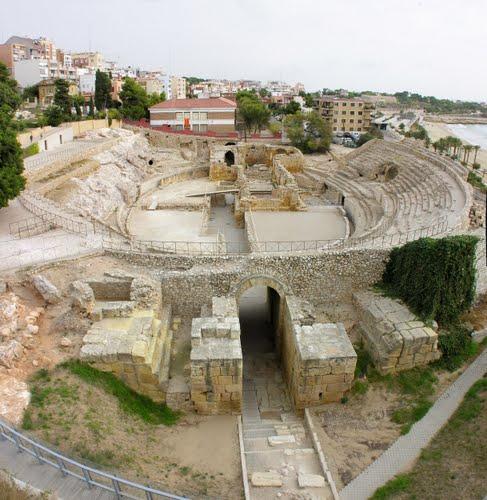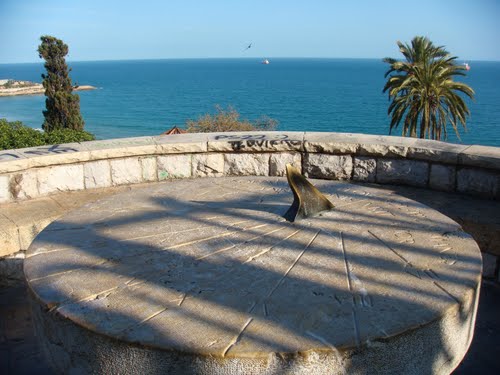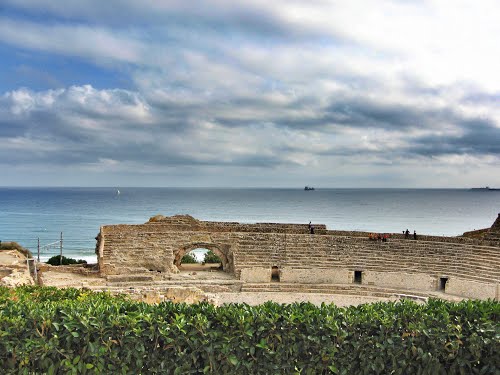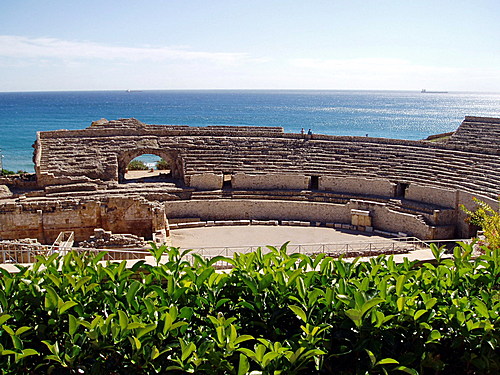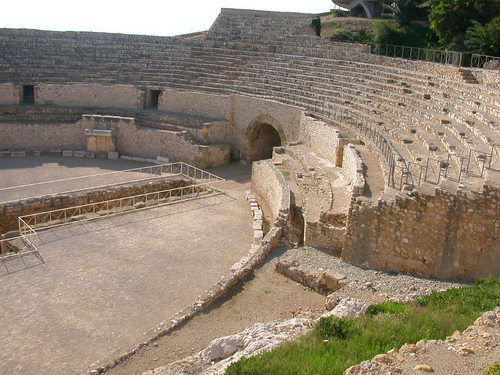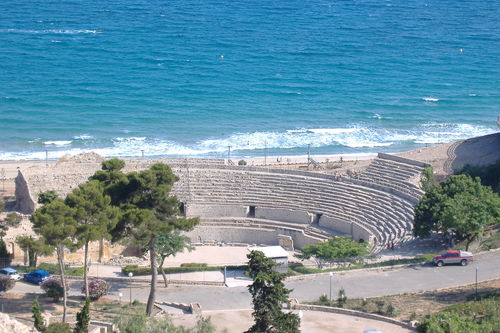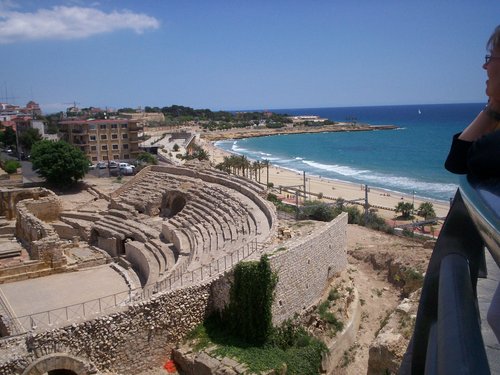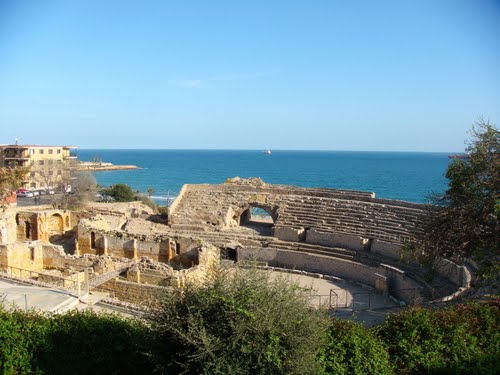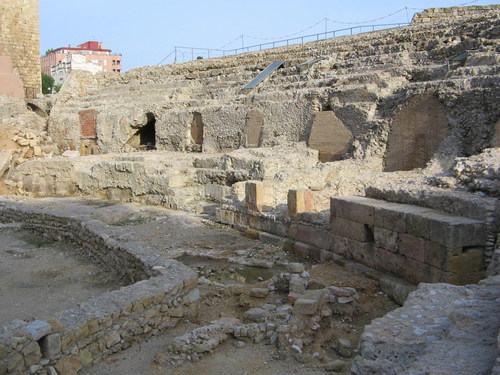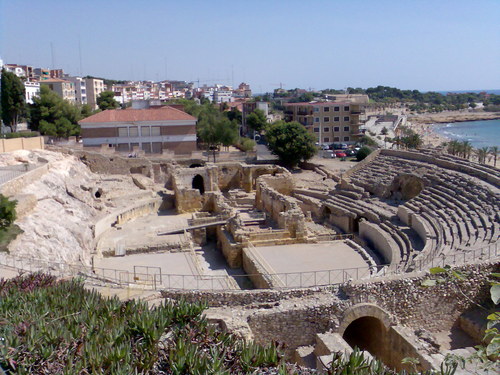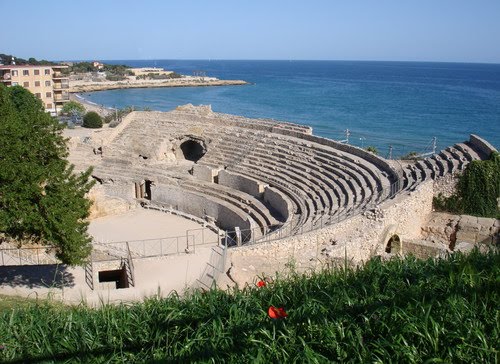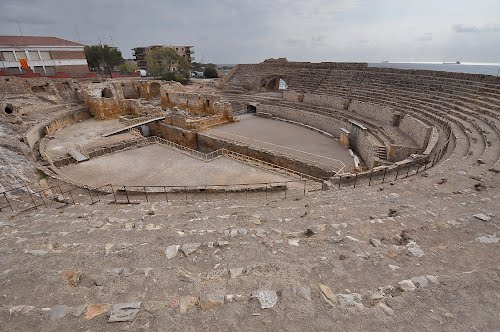Tarragona Amphitheatre is an amphitheatre from the Roman city of Tarraco, now Tarragona, in the Catalonia region of north-east Spain. It was built in the 2nd century AD, sited close to the forum of this provincial capital.
The amphitheatre could house up to 15,000 spectators, and measured 130 by 102 metres.
History
It was built at the end of 1st century BC and the start of 2nd century BC, down from the walls and facing the sea. There are remains of a large inscription dating to the reign of Elagabalus (3rd century AD) and located in the podium.
In 259, during the persecution of Christians by Emperor Valerian, the city's bishop, Fructuosus, and his deacons, Augurius and Eulogius, were burned alive. After Christianity became the official religion of the empire, the amphitheatre lost its original functions. The following years some of the building's stones were used to build a basilica to commemorate the three martyrs. Tombs were excavated in the arena and funerary mausoleums were annexed to the church.
The Islamic invasion of Spain started a period of abandonment of the area, which lasted until the 12th century, when a church was built over the remains of the Visigothic church, in Romanesque style. This was demolished in 1915.

